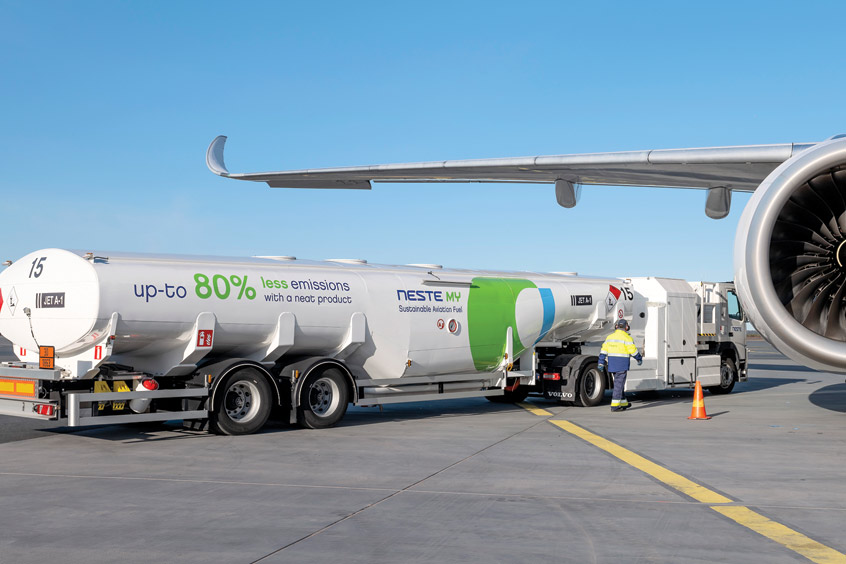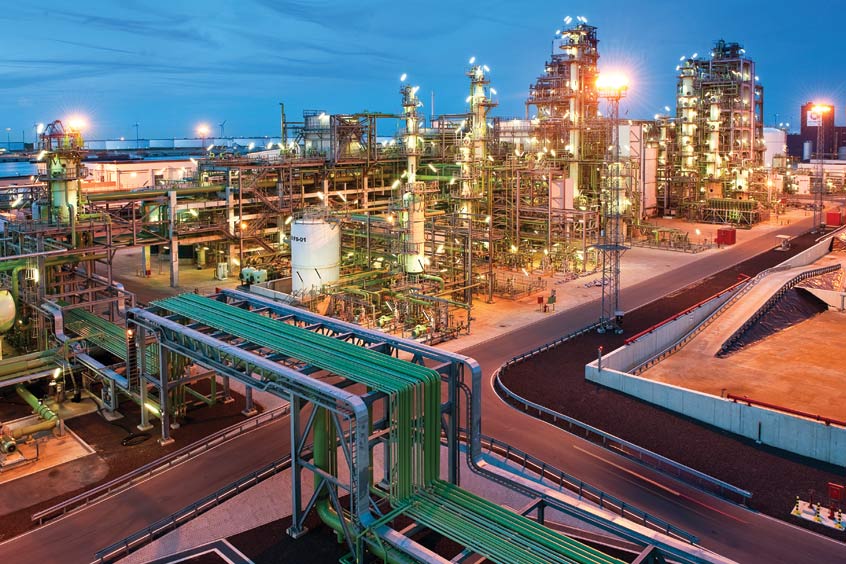ACE 2026 - The home of global charter.
 The bimonthly news publication for aviation professionals.
The bimonthly news publication for aviation professionals.



It is a truth universally acknowledged that business aviation uses around two per cent of all commercial jet fuel. Two per cent of the roughly 300 million tonnes of fuel currently consumed equates to around six million tonnes. Is six million tonnes of SAF available now?
Availability will be driven by voluntary demand say Victor and Neste, who believe the industry must lead by example. They say their joint 'pay here, use there' model will help drive volume in production.
SAF producer Neste has a current production capability of one million tons per annum. This will grow to 1.5 million tons per annum in early 2024 and to 2.2 million tons by 2026. A shortfall on the overall amount needed but other suppliers are available.
Neste says that while: "alternative propulsion technologies such as electric or hydrogen-powered flight will play a role in cleaning up the industry in the future, these are in the early stages of development and will not be commercially available at scale in the next decade.
"It is also important to realise that with these technologies, the infrastructure and aircraft need to be adapted, which adds to the total costs to develop. Meanwhile, SAF is available now and can be used in existing aircraft and fuel infrastructure."
The company feels business aviation could be a driver of upscaled production: "From a broader industry perspective, business aviation can play a role in helping to create the demand certainty needed to attract investments into new SAF production capacity. Each drop of fossil fuel we can replace counts, regardless of where it is used."
Book & Claim allows customers to access SAF carbon reductions without being physically connected to the supply site - SAF is delivered into the supply chain at one airport location and the carbon reduction associated with it is booked into a registry; a customer at another location can claim those carbon reductions by purchasing traditional jet fuel along with the benefit of the lifecycle carbon reductions that have been registered. Charter marketplace Victor has taken this one step further with its ‘pay here, use there’ solution, where customers can choose how much Neste MY SAF they would like to order when paying for each and every booking. They won't charter using the SAF they purchase for their own flight, however their SAF contribution will ensure another in-sector partner flight benefits from a carbon emission reduction of the amount purchased.
Victor says: "We have been celebrating one year of our pioneering ‘pay here, use there’ blueprint with Neste. To our knowledge, this has been the first direct-to-consumer SAF solution where the customer can voluntarily choose to purchase any amount of SAF, from between five to 100 per cent, directly from Neste, the supplier, at net price. And they receive a certificate detailing the carbon emission reduction that they enabled, to use for their science-based targets reporting. After one year of learnings and with results proving that one in five Victor customers are willing to voluntarily pay approximately £965 more per booking for SAF, our blueprint indicates that it has great potential to enable SAF uptake to scale."
The Science Based Targets Initiative is a pathway for companies to reduce greenhouse gas emissions. Targets are considered ‘science-based’ if they are in line with what the latest climate science deems necessary to meet the goals of the Paris Agreement – limiting global warming to well-below 2°C above pre-industrial levels and pursuing efforts to limit warming to 1.5°C.
Victor claims its ‘pay here, use there’ solution is successful because there is full transparency and a clear chain of custody; the consumer buys SAF direct from Neste at net price. "We have seen fantastic results with Victor in the first year and hope to see this increase further in the coming months. Neste MY SAF is already available and not a future or SAF credit, and the customer gets to own their carbon emission reduction. Therefore, we believe people will be more likely to purchase SAF via the transparent model than some Book & Claim schemes, which can be quite opaque," it says.
"'Pay here, use there' has similarities to Book & Claim, yet avoids SAF credits and out-of-sector emission reductions, instead utilising SAF that is in production, ready and available for use today. The increased transparency, alignment with SBTi and ease of purchase makes it a credible solution for those travellers seeking to reduce their scope 3 emissions."
In general, says Neste, SAF is three to five times more expensive than conventional jet fuel, however, the cost of carbon and climate impact is not included in the fossil fuel price. So the question should not be ‘how much does SAF cost?', but rather 'what will the cost be if we don’t use SAF?'
"Furthermore, when we look at the total travel cost (flight, taxi, hotel, dinner), adding SAF to the flight is only a small part of the total travel cost."
While SAF is, of course, more expensive than fossil jet fuel, the partnership model has proved that one in five people are willing to pay more to reduce their emissions. Both companies believe that if SAF were to become available at check out on commercial airline platforms, many climate-conscious scheduled airline consumers would be willing to pay more to fly more sustainably.
Over time, says Neste, and as the industry scales up production of SAF, so the cost of SAF could benefit from economies of scale in its production and learning benefits as we get smarter at how to make it. Conversely, if the cost of carbon increases over time, the total cost of fossil fuel will go up. "These forces could cause the cost of SAF and fossil jet fuel to converge over time," it notes.
A year into the partnership with Neste, Victor feels it has proved that if you offer people a better way to fly, many will take it. The partners are actively encouraging others to replicate the model and to similarly drive voluntary demand for SAF, within business aviation and the wider commercial aviation sector. Business aviation, they feel, can play a leading role in ramping up SAF demand and production for the greater benefit of aviation, and society, at large.